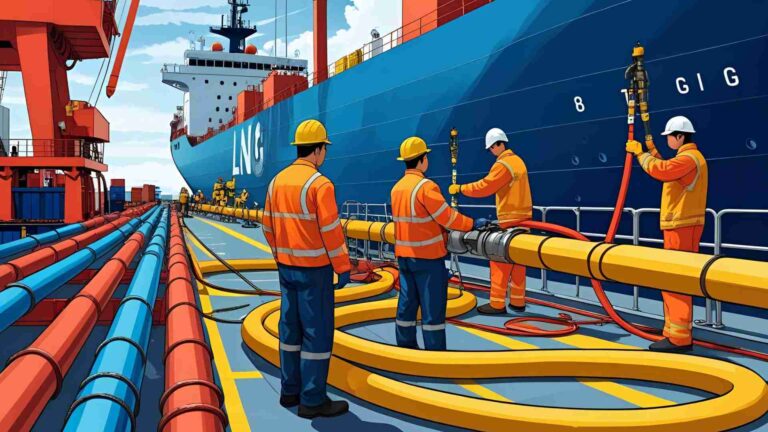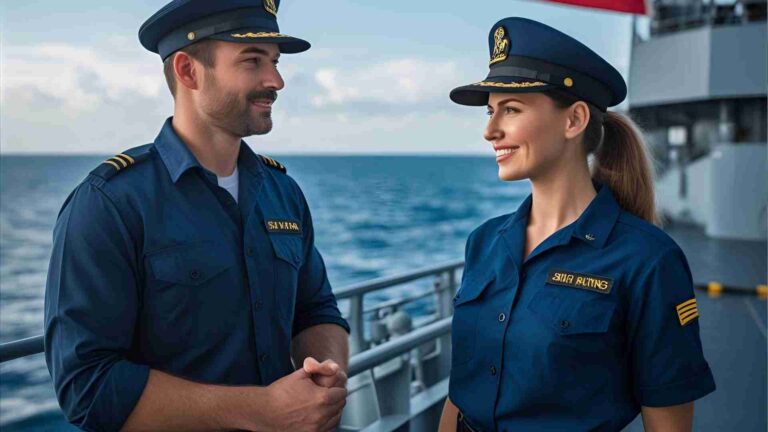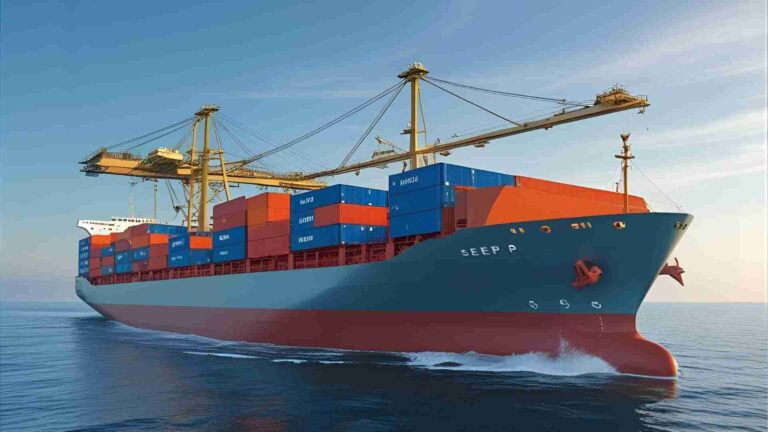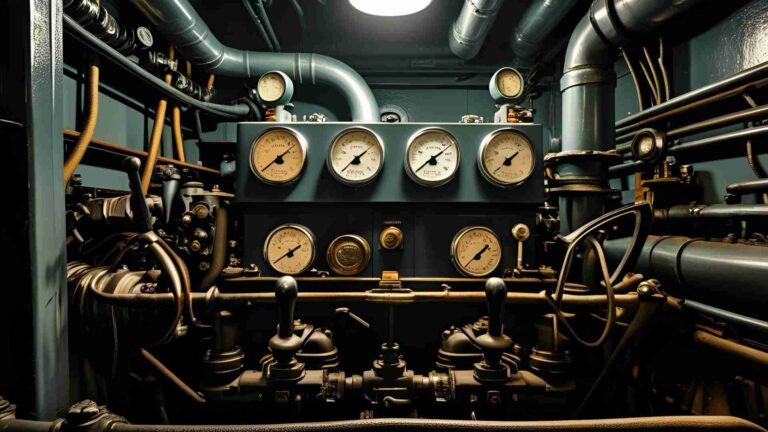A Guide to Merchant Navy Ranks (With Illustrations)
Explore Merchant Navy ranks, roles, and responsibilities across deck, engine, and catering departments with detailed insights and charts.
The Merchant Navy, often referred to as the Merchant Marine, is the backbone of global trade, responsible for transporting approximately 90% of the world’s goods across oceans. This vast network of merchant ships—ranging from container vessels and bulk carriers to tankers and passenger liners—relies on skilled seafarers to operate and manage complex operations.
These professionals work within a structured hierarchy of ranks, ensuring seamless coordination, safety, and efficiency aboard vessels carrying thousands of tonnes of cargo or passengers. This guide provides an in-depth exploration of Merchant Navy ranks, their responsibilities, and the organizational structure across the deck, engine, and catering departments, offering a clear understanding of the roles that keep these ships operational.
Understanding the Merchant Navy Hierarchy
The Merchant Navy operates with a well-defined ranking system that ensures efficient management of shipboard operations. This hierarchy is universally recognized across shipping companies worldwide, with minor variations in titles or specific duties depending on the company or type of vessel. The ranks are divided into three primary departments:
- Deck Department: Responsible for navigation, cargo handling, and berthing operations.
- Engine Department: Manages the ship’s propulsion systems and machinery maintenance.
- Catering Department: Oversees meal preparation, housekeeping, and passenger services (on passenger ships).
Each department has its own chain of command, with the Captain (or Master) holding ultimate authority over the entire vessel. The hierarchy ensures that tasks are delegated effectively, maintaining safety, operational efficiency, and compliance with international maritime regulations, such as those set by the International Maritime Organization (IMO) and the Safety of Life at Sea (SOLAS) conventions.
Below, we delve into each department, detailing the ranks, their roles, and their significance in the ship’s operations. To aid understanding, we include visual aids such as tables and a Mermaid chart to illustrate the hierarchy.
The Deck Department: Navigating the Seas
The deck department is the nerve center of a merchant ship, responsible for navigation, cargo operations, and maintaining the vessel’s structural integrity. Seafarers in this department require specialized skills to operate advanced navigational equipment on the bridge and manage cargo-handling gear. The ranks within the deck department are as follows:
The Captain (Master)
The Captain, or Master, is the highest-ranking officer on a merchant ship, holding ultimate responsibility for all operations, safety, and legal matters. The Captain oversees navigation, crew management, cargo operations, and compliance with maritime laws. They make critical decisions, such as altering course to avoid adverse weather or addressing emergencies like fires or collisions. The Captain’s authority is absolute, and they are accountable for the vessel’s safety and the welfare of everyone on board.
In the absence of the Captain, the Chief Officer assumes interim command, ensuring continuity of operations. The Captain’s role demands extensive experience, leadership skills, and qualifications, typically including a Master’s Certificate of Competency.
Chief Officer (First Mate)
The Chief Officer, also known as the First Mate, is the second-in-command and heads the deck department. This role is managerial, involving the execution of the Captain’s orders and oversight of all deck operations. The Chief Officer supervises the crew, manages cargo operations (loading and unloading), and ensures the vessel’s security and safety. Key responsibilities include:
- Navigation: Serving as an Officer of the Watch (OOW) during navigational shifts (typically 0400-0800 and 1600-2000 hours at sea).
- Cargo Operations: Overseeing the safe handling and stowage of cargo in port.
- Safety and Maintenance: Managing life-saving appliances (LSA), fire-fighting appliances (FFA), and hull maintenance.
- Crew Welfare: Ensuring the well-being of the crew and passengers (on passenger ships).
The Chief Officer’s role is demanding, requiring both technical expertise and leadership. They typically hold a Chief Mate’s Certificate of Competency and have significant experience as a deck officer.
Second Officer (Second Mate)
The Second Officer is a navigational officer responsible for maintaining charts, publications, and navigational equipment. They also serve as the ship’s medical officer, managing medical supplies and providing first aid when needed. As an OOW, the Second Officer keeps watch during 1200-1600 and 0000-0400 hours at sea, and 1200-1800 and 0000-0600 hours in port. Their duties include:
- Updating nautical charts and publications.
- Assisting in navigation and cargo operations.
- Administering medical care in emergencies.
The Second Officer typically holds a Second Mate’s Certificate of Competency and is preparing for advancement to Chief Officer.
Third Officer (Third Mate)
The Third Officer is responsible for the maintenance of life-saving appliances (LSA) and fire-fighting appliances (FFA), as well as handling port documentation and managing the ship’s bond store (duty-free goods). As an OOW, they keep watch during 0800-1200 and 2000-0000 hours at sea, and 0600-1200 and 1800-0000 hours in port. Their role is critical in ensuring the ship’s safety equipment is operational and compliant with regulations.
Deck Cadet
Deck Cadets are trainee officers, typically fresh from maritime academies, learning the ropes of ship operations. Their primary role is to gain practical experience under the guidance of senior officers. Tasks include assisting with navigational watches, learning cargo operations, and understanding ship maintenance. Cadets work toward obtaining their Certificate of Competency to become qualified Officers of the Watch.
Deck Ratings
Ratings are non-officer crew members who perform hands-on tasks under the supervision of deck officers. The ranks within the deck ratings include:
- Bosun: The head of the deck ratings, the Bosun coordinates maintenance tasks, such as painting, cleaning, and repairing deck equipment. They work closely with the Chief Officer to execute the deck work schedule.
- Able Seaman (AB): An experienced rating with a merchant mariner’s document, the AB assists in navigation, cargo handling, and maintenance tasks. They are skilled in tasks like mooring and anchoring.
- Ordinary Seaman (OS): The OS performs routine maintenance tasks, such as cleaning, painting, and scaling the deck. They also assist in cargo operations and handle ropes and rigging.
- Trainee OS: A beginner in the rating category, learning basic deck tasks under the Bosun’s supervision.
Welder/Fitter
The Welder/Fitter is a unique rank that serves both the deck and engine departments, performing welding and repair tasks on the ship’s structure and machinery.
To visualize the deck department hierarchy, the following chart illustrates the chain of command:
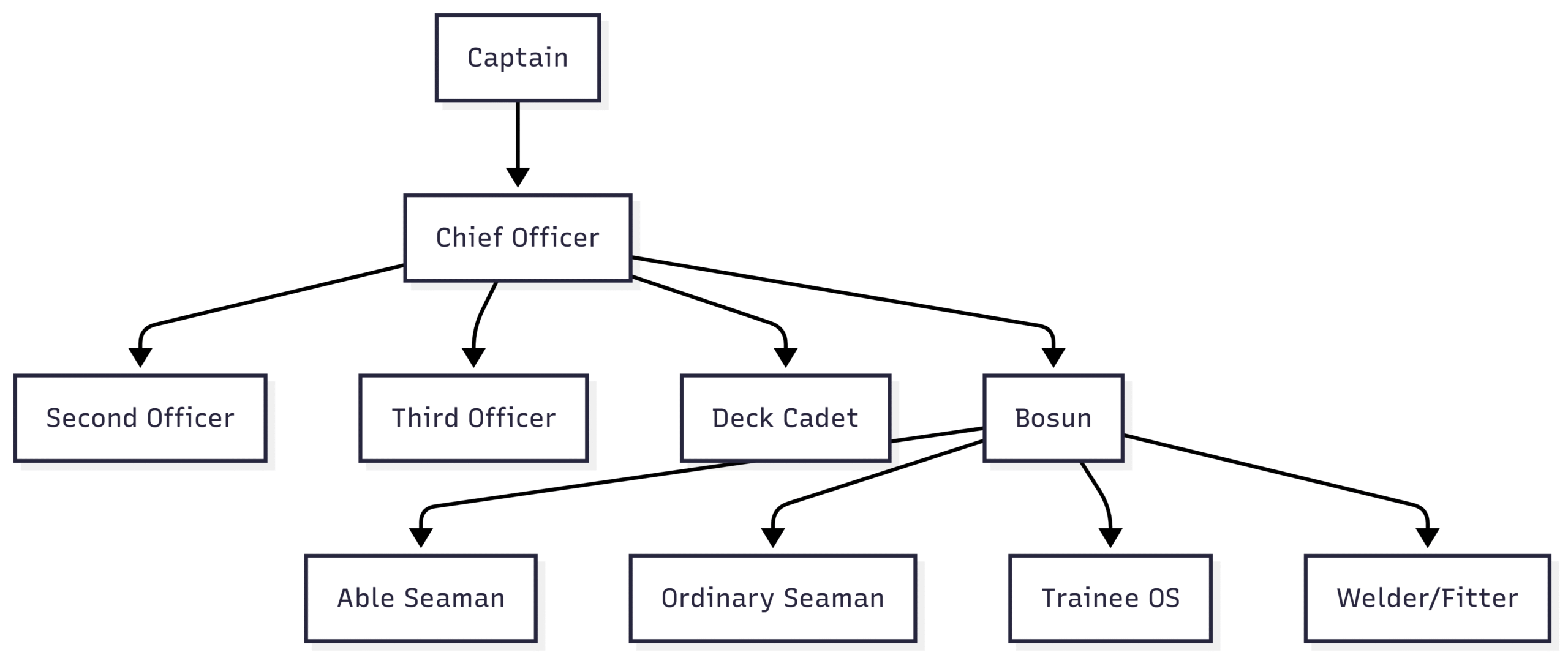
The Engine Department: Powering the Vessel
The engine department is responsible for the operation and maintenance of the ship’s propulsion systems, auxiliary machinery, and other critical systems in the engine room. This department requires technical expertise and adherence to strict safety protocols. The ranks within the engine department are:
Chief Engineer
The Chief Engineer is the head of the engine department, equivalent in seniority to the Captain but focused solely on engineering operations. They hold a Chief Engineer’s Certificate of Competency (often called the “Chief’s Ticket”) and are responsible for:
- Overseeing the operation and maintenance of all machinery, including engines, generators, and pumps.
- Managing fuel consumption and engine efficiency.
- Ensuring compliance with environmental and safety regulations.
- Supervising the engine department crew.
The Chief Engineer works closely with the Captain to ensure the vessel’s operational readiness but does not assume command of the ship.
Second Engineer (First Assistant Engineer)
The Second Engineer is the deputy to the Chief Engineer, responsible for the day-to-day operations of the engine room. They supervise machinery maintenance, assign tasks to junior engineers, and keep watch during daytime hours. Their role includes troubleshooting mechanical issues and ensuring the engine room operates smoothly.
Third Engineer (Second Assistant Engineer)
The Third Engineer assists the Second Engineer, focusing on specific machinery systems as assigned by the Chief Engineer. They also perform watchkeeping duties, monitoring engine performance and reporting any issues.
Fourth Engineer (Third Assistant Engineer)
The Fourth Engineer is the most junior engineering officer, responsible for maintaining assigned machinery and assisting in watchkeeping. They report to the Second Engineer and gain practical experience to advance in rank.
Fifth Engineer (Engineering Cadet)
The Fifth Engineer, or Engineering Cadet, is a trainee officer learning the intricacies of engine room operations. They assist senior engineers, observe maintenance tasks, and prepare for their Certificate of Competency examinations.
Engine Room Ratings
Engine room ratings are non-officer crew members who perform technical and maintenance tasks. The ranks include:
- Fitter: Performs welding, repairs, and maintenance on machinery, often working alongside the Welder/Fitter from the deck department.
- Motorman: Assists engineers with machinery operation and maintenance.
- Wiper: Performs cleaning and basic maintenance tasks in the engine room.
- Trainee Fitter/Wiper: Entry-level ratings learning basic engine room tasks.
The following table summarizes the engine department ranks and their primary responsibilities:
| Rank | Primary Responsibilities |
|---|---|
| Chief Engineer | Oversees engine room operations, maintenance, and compliance with regulations. |
| Second Engineer | Manages daily engine room activities, supervises crew, and keeps daytime watches. |
| Third Engineer | Maintains assigned machinery, assists in watchkeeping, and reports to Second Engineer. |
| Fourth Engineer | Maintains machinery, assists in watchkeeping, and reports to Second Engineer. |
| Fifth Engineer (Cadet) | Trainee learning engine room operations and assisting senior engineers. |
| Fitter | Performs welding and repairs on machinery. |
| Motorman | Assists with machinery operation and maintenance. |
| Wiper | Performs cleaning and basic maintenance in the engine room. |
| Trainee Fitter/Wiper | Entry-level rating learning engine room tasks. |
The Catering Department: Sustaining the Crew
The catering department ensures the crew and passengers (on passenger ships) are well-fed and that living quarters are maintained. This department is critical for crew morale and passenger satisfaction. The ranks include:
Chief Cook
The Chief Cook is the head of the catering department, responsible for preparing meals, managing food stores, and maintaining hygiene in the galley. They work with the Third Officer or Cadet to requisition food supplies and ensure the galley equipment is clean and functional.
Trainee Cook
The Trainee Cook assists the Chief Cook in meal preparation and inventory management, learning the skills needed to become a Chief Cook.
Steward
The Steward handles cooking, serving meals, cleaning officers’ quarters, and managing grocery accounts. They also assist in menu planning and cost control. On passenger ships, the catering department may include additional roles, such as assistant stewards or galley hands, to accommodate larger numbers of passengers.
The following table outlines the catering department ranks and their duties:
| Rank | Primary Responsibilities |
|---|---|
| Chief Cook | Prepares meals, manages food stores, ensures galley hygiene, and requisitions supplies. |
| Trainee Cook | Assists Chief Cook in meal preparation and inventory management. |
| Steward | Cooks, serves meals, cleans quarters, manages grocery accounts, and plans menus. |
Variations Across Shipping Companies
While the Merchant Navy hierarchy is standardized, variations exist based on the shipping company, type of vessel, and regional nomenclature. For example, a container ship may have a leaner catering department compared to a cruise ship, which requires a larger staff to serve passengers. Some companies may use alternative titles, such as “First Assistant Engineer” instead of “Second Engineer.” However, the core responsibilities and chain of command remain consistent across the industry.
Career Progression and Qualifications
Advancing through Merchant Navy ranks requires a combination of education, training, and experience. Officers must obtain Certificates of Competency, which involve rigorous examinations and sea time. For example:
- Deck Officers: Start as Deck Cadets, progress to Third Officer, Second Officer, Chief Officer, and potentially Captain.
- Engine Officers: Begin as Fifth Engineers, advance to Fourth, Third, Second, and Chief Engineer.
- Ratings: Start as Trainees or Ordinary Seamen/Wipers, progressing to Able Seaman or Motorman, and potentially Bosun or Fitter.
Maritime academies provide the foundational training, while on-the-job experience and certifications enable career progression. Salaries vary widely based on rank, company, and vessel type, with approximate ranges as follows (in USD, based on industry standards):
| Rank | Approximate Monthly Salary (USD) |
|---|---|
| Captain | $8,000 – $20,000 |
| Chief Engineer | $7,500 – $18,000 |
| Chief Officer | $6,000 – $12,000 |
| Second Officer/Engineer | $4,500 – $9,000 |
| Third Officer/Engineer | $3,500 – $7,000 |
| Deck/Engine Cadet | $1,000 – $2,500 |
| Bosun/Fitter | $2,000 – $4,500 |
| Able Seaman/Motorman | $1,500 – $3,500 |
| Ordinary Seaman/Wiper | $1,000 – $2,500 |
| Chief Cook | $2,000 – $5,000 |
| Steward/Trainee Cook | $1,000 – $3,000 |
Note: Salaries vary by region, company, and vessel type. For precise salary information, refer to specific company policies or industry resources.
The Importance of the Hierarchy
The Merchant Navy’s ranking system is not merely a bureaucratic structure; it is a critical framework for ensuring safety, efficiency, and accountability. Each rank has clearly defined roles, preventing overlap and ensuring that tasks are executed by qualified personnel. The hierarchy also fosters career progression, motivating seafarers to gain skills and certifications to advance.
The Captain’s ultimate authority, supported by department heads like the Chief Officer and Chief Engineer, ensures that decisions are made swiftly and effectively, especially during emergencies. The collaboration between departments—deck for navigation, engine for propulsion, and catering for sustenance—creates a cohesive operation that keeps merchant ships running smoothly.
Conclusion
The Merchant Navy is a vital cog in the wheel of global trade, and its ranking system is the foundation of its operational success. From the Captain’s overarching responsibility to the Trainee Cook’s support in the galley, each role plays a critical part in ensuring safe and efficient voyages. Understanding these ranks provides insight into the complex world of maritime operations, highlighting the professionalism and dedication required to navigate the seas. Whether you’re an aspiring seafarer or simply curious about the Merchant Navy, this guide offers a comprehensive look at the ranks that power the ships carrying the world’s goods.
Happy Boating!
Share A Guide to Merchant Navy Ranks (With Illustrations) with your friends and leave a comment below with your thoughts.
Read International Code of Safety for Ship Using Gases or Other Low-flashpoint Fuels (IGF Code) until we meet in the next article.

